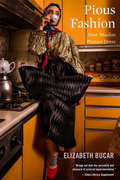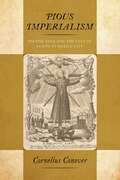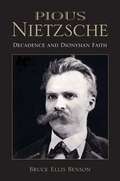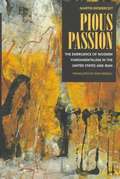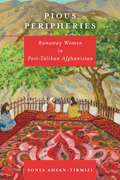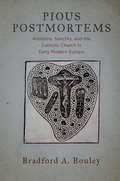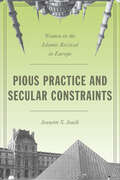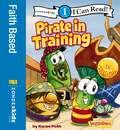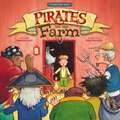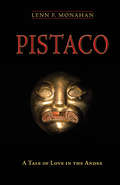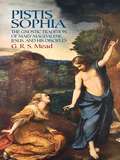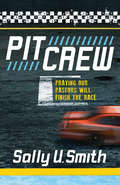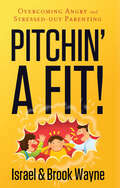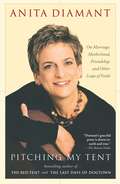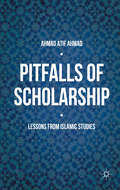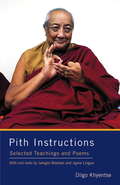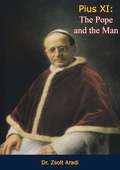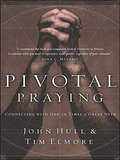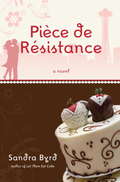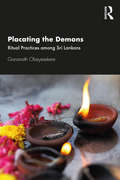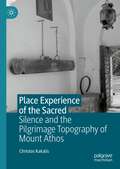- Table View
- List View
Pious Fashion: How Muslim Women Dress
by Elizabeth BucarFor many Westerners, the veil is the ultimate sign of women’s oppression. But Elizabeth Bucar’s take on Muslim women’s clothing is a far cry from this attitude. She invites readers to join her in three Muslim-majority nations as she surveys pious fashion from head to toe and shows how Muslim women approach the question “What to wear?” with style.
Pious Imperialism: Spanish Rule and the Cult of Saints in Mexico City
by Cornelius ConoverThis book analyzes Spanish rule and Catholic practice from the consolidation of Spanish control in the Americas in the sixteenth century to the loss of these colonies in the nineteenth century by following the life and afterlife of an accidental martyr, San Felipe de Jésus. Using Mexico City–native San Felipe as the central figure, Conover tracks the global aspirations of imperial Spain in places such as Japan and Rome without losing sight of the local forces affecting Catholicism. He demonstrates the ways Spanish religious attitudes motivated territorial expansion and transformed Catholic worship. Using Mexico City as an example, Conover also shows that the cult of saints continually refreshed the spiritual authority of the Spanish monarch and the message of loyalty of colonial peoples to a devout king. Such a political message in worship, Conover concludes, proved contentious in independent Mexico, thus setting the stage for the momentous conflicts of the nineteenth century in Latin American religious history.
Pious Irreverence: Confronting God in Rabbinic Judaism (Divinations: Rereading Late Ancient Religion)
by Dov WeissJudaism is often described as a religion that tolerates, even celebrates arguments with God. Unlike Christianity and Islam, it is said, Judaism endorses a tradition of protest as first expressed in the biblical stories of Abraham, Job, and Jeremiah. In Pious Irreverence, Dov Weiss has written the first scholarly study of the premodern roots of this distinctively Jewish theology of protest, examining its origins and development in the rabbinic age.Weiss argues that this particular Jewish relationship to the divine is rooted in the most canonical of rabbinic texts even as he demonstrates that in ancient Judaism the idea of debating God was itself a matter of debate. By elucidating competing views and exploring their theological assumptions, the book challenges the scholarly claim that the early rabbis conceived of God as a morally perfect being whose goodness had to be defended in the face of biblical accounts of unethical divine action. Pious Irreverence examines the ways in which the rabbis searched the words of the Torah for hidden meanings that could grant them the moral authority to express doubt about, and frustration with, the biblical God. Using characters from the Bible as their mouthpieces, they often challenged God's behavior, even in a few remarkable instances, envisioning God conceding error, declaring to the protestor, "You have taught Me something; I will nullify My decree and accept your word."
Pious Labor: Islam, Artisanship, and Technology in Colonial India (Islamic Humanities #5)
by Amanda LanzilloA free ebook version of this title is available through Luminos, University of California Press’s Open Access publishing program. Visit www.luminosoa.org to learn more. In the late nineteenth and early twentieth centuries, working-class people across northern India found themselves negotiating rapid industrial change, emerging technologies, and class hierarchies. In response to these changes, Indian Muslim artisans began publicly asserting the deep relation between their religion and their labor, using the increasingly accessible popular press to redefine Islamic traditions "from below." Centering the stories and experiences of metalsmiths, stonemasons, tailors, press workers, and carpenters, Pious Labor examines colonial-era social and technological changes through the perspectives of the workers themselves. As Amanda Lanzillo shows, the colonial marginalization of these artisans is intimately linked with the continued exclusion of laboring voices today. By drawing on previously unstudied Urdu-language technical manuals and community histories, Lanzillo highlights not only the materiality of artisanal production but also the cultural agency of artisanal producers, filling in a major gap in South Asian history.
Pious Nietzsche: Decadence and Dionysian Faith (Indiana Series in the Philosophy of Religion )
by Bruce Ellis BensonBruce Ellis Benson puts forward the surprising idea that Nietzsche was never a godless nihilist, but was instead deeply religious. But how does Nietzsche affirm life and faith in the midst of decadence and decay? Benson looks carefully at Nietzsche's life history and views of three decadents, Socrates, Wagner, and Paul, to come to grips with his pietistic turn. Key to this understanding is Benson's interpretation of the powerful effect that Nietzsche thinks music has on the human spirit. Benson claims that Nietzsche's improvisations at the piano were emblematic of the Dionysian or frenzied, ecstatic state he sought, but was ultimately unable to achieve, before he descended into madness. For its insights into questions of faith, decadence, and transcendence, this book is an important contribution to Nietzsche studies, philosophy, and religion.
Pious Passion: The Emergence of Modern Fundamentalism in the United States and Iran
by Martin Riesebrodt Don ReneauMartin Riesebrodt's unconventional study provides an extraordinary look at religious fundamentalism. Comparing two seemingly disparate movements--in early twentieth-century United States and 1960s and 1970s Iran--he examines why these movements arose and developed. He sees them not simply as protests against "modernity" per se, but as a social and moral community's mobilization against its own marginalization and threats to its way of life. These movements protested against the hallmarks of industrialization and sought to transmit conservative cultural models to the next generation. Fundamentalists desired a return to an "authentic" social order governed by God's law, one bound by patriarchal structures of authority and morality. Both movements advocated a strict gender dualism and were preoccupied with controlling the female body, which was viewed as the major threat to public morality.
Pious Peripheries: Runaway Women in Post-Taliban Afghanistan
by Sonia Ahsan-TirmiziThe Taliban made piety a business of the state, and thereby intervened in the daily lives and social interactions of Afghan women. Pious Peripheries examines women's resistance through groundbreaking fieldwork at a women's shelter in Kabul, home to runaway wives, daughters, mothers, and sisters of the Taliban. Whether running to seek marriage or divorce, enduring or escaping abuse, or even accused of singing sexually explicit songs in public, "promiscuous" women challenge the status quo—and once marked as promiscuous, women have few resources. This book provides a window into the everyday struggles of Afghan women as they develop new ways to challenge historical patriarchal practices. Sonia Ahsan-Tirmizi explores how women negotiate gendered power mechanisms, notably those of Islam and Pashtunwali. Sometimes defined as an honor code, Pashtunwali is a discursive and material practice that women embody through praying, fasting, oral and written poetry, and participation in rituals of hospitality and refuge. In taking ownership of Pashtunwali and Islamic knowledge, in both textual and oral forms, women create a new supportive community, finding friendship and solidarity in the margins of Afghan society. So doing, these women redefine the meanings of equality, honor, piety, and promiscuity in Afghanistan.
Pious Postmortems: Anatomy, Sanctity, and the Catholic Church in Early Modern Europe
by Bradford A. BouleyAs part of the process of consideration for sainthood, the body of Filippo Neri, "the apostle of Rome," was dissected shortly after he died in 1595. The finest doctors of the papal court were brought in to ensure that the procedure was completed with the utmost care. These physicians found that Neri exhibited a most unusual anatomy. His fourth and fifth ribs had somehow been broken to make room for his strangely enormous and extraordinarily muscular heart. The physicians used this evidence to conclude that Neri had been touched by God, his enlarged heart a mark of his sanctity.In Pious Postmortems, Bradford A. Bouley considers the dozens of examinations performed on reputedly holy corpses in the sixteenth and seventeenth centuries at the request of the Catholic Church. Contemporary theologians, physicians, and laymen believed that normal human bodies were anatomically different from those of both very holy and very sinful individuals. Attempting to demonstrate the reality of miracles in the bodies of its saints, the Church introduced expert testimony from medical practitioners and increased the role granted to university-trained physicians in the search for signs of sanctity such as incorruption. The practitioners and physicians engaged in these postmortem examinations to further their study of human anatomy and irregularity in nature, even if their judgments regarding the viability of the miraculous may have been compromised by political expediency. Tracing the complicated relationship between the Catholic Church and medicine, Bouley concludes that neither religious nor scientific truths were self-evident but rather negotiated through a complex array of local and broader interests.
Pious Practice and Secular Constraints: Women in the Islamic Revival in Europe
by Jeanette S. JouiliThe visible increase in religious practice among young European-born Muslims has provoked public anxiety. New government regulations seek not only to restrict Islamic practices within the public sphere, but also to shape Muslims', and especially women's, personal conduct. Pious Practice and Secular Constraints chronicles the everyday ethical struggles of women active in orthodox and socially conservative Islamic revival circles as they are torn between their quest for a pious lifestyle and their aspirations to counter negative representations of Muslims within the mainstream society. Jeanette S. Jouili conducted fieldwork in France and Germany to investigate how pious Muslim women grapple with religious expression: for example, when to wear a headscarf, where to pray throughout the day, and how to maintain modest interactions between men and women. Her analysis stresses the various ethical dilemmas the women confronted in negotiating these religious duties within a secular public sphere. In conversation with Islamic and Western thinkers, Jouili teases out the important ethical-political implications of these struggles, ultimately arguing that Muslim moral agency, surprisingly reinvigorated rather than hampered by the increasingly hostile climate in Europe, encourages us to think about the contribution of non-secular civic virtues for shaping a pluralist Europe.
Pirate in Training: Level 1 (I Can Read! / Big Idea Books / VeggieTales)
by Karen PothA Lesson about following God&’s plan.Junior has a plan. He wants to quit school. He wants to be a pirate. But Junior&’s pirate friends remind him that there is more to life than fun ... and God already has a plan for Junior!This is a Level One I Can Read! book, which means it&’s perfect for children learning to sound out words and sentences. It aligns with guided reading level I and will be of interest to children Pre-K to 2nd grade.
Pirates on the Farm (The Next Door Series)
by Denette FretzThe Pirates Next Door, written by Denette Jenkins Fretz and illustrated by (TBD), tells the tale of five brazen pirates who swap high seas adventures for life on a farm. When your neighbors are mischievous pirates, calamity becomes commonplace. Each member of the unadventurous Sanders family must choose how to respond to the pirates and their antics. Mother forms a Ban the Buccaneers Brigade, eight-year-old Joey imitates everything the pirates do, his older sister keeps her distance, and Dad quietly helps the outcasts find their “land legs.” Humor encases the story’s theme of loving eccentric neighbors… as yourself.
Pistaco: A Tale of Love in the Andes
by Lynn F. MonahanSteven McMahon, a young American struggling to reconcile his priestly vocation with his very human desire for love and intimacy, flees to Peru on mission, seeking the serenity he cannot find at home. In a tiny village in the Andes Mountains he meets a young school teacher chased by demons of her own. They soon find themselves trapped between the brutal Shining Path guerrillas who threaten mayhem across the mountain countryside and a harsh military counter-insurgency trying to quash the rebellion. Amid this historic struggle between the forces of order and ungodly acts of terror, and haunted by the legend of el pistaco, a mythical fiend believed by locals to feed on the unwary, they discover the meaning—and the price—of love.
Pistis Sophia
by G. R. MeadPistis Sophia is an important Gnostic text. It relates the Gnostic teachings of the transfigured Jesus to the assembled disciples including his mother Mary, Mary Magdalene, and Martha. Pisti Sophia recounts that Jesus remained on earth after the resurrection for 11 years. In it the complex structures and hierarchies of heaven familiar in Gnostic teachings are revealed.
Pistis Sophia: The Gnostic Tradition of Mary Magdalene, Jesus, and His Disciples
by G. R. MeadA document of paramount historical importance, not only in terms of Christianity but also with respect to the development of Western religion. It chronicles the teachings of Jesus, who explains life's mysteries to his disciples and Mary Magdalene. Their discussions take place after Christ's resurrection and include accounts of his ascension into heaven.
Pit Crew: Praying Our Pastors Will Finish the Race
by Sally U. SmithThis high octane book will leave you as passionate about praying for your pastor as NASCAR fans are when their favorite driver pulls into the winner’s circle.
Pitch Black: Color Me Lost (TrueColors #4)
by Melody CarlsonIf Morgan thought her life was tough before -- what with a drug-addicted, klepto brother and a cradle-robbing mother -- it just got worse: Her friend Jason took his own life. Morgan copes -- or tries to -- by attempting to piece together vague clues that might explain Jason's suicide. Making matters worse, she can't help but feel responsible somehow. Sometimes she thinks maybe Jason had the right idea all along.
Pitchin' A Fit!: Overcoming Angry and Stressed-Out Parenting
by Israel Wayne Brook WayneParenting comes with stresses that can make the most laid-back among us feel irritable, frustrated, and angry. Even parents who sincerely love their children sometimes use the wrong methods of anger and frustration in an attempt to control their children. But angry parenting doesn't just weaken relationships between parents and their children; it can, over time, destroy them. Few parents set out to become yelling meanies who no longer enjoy their children. Yet many feel stuck, unable to pull themselves out of their ugly habits. This book: Provides practical and biblical solutions to get to the other side of the issue Gives hope and freedom from the tyranny of stressed-out and angry parenting Offers solutions that are ideal for any family. If anger is in your home -- even in small ways -- this book is for you. It is time to replace that anger with something more powerful: patience and peace. Israel and Brook share candidly from their experience as parents.
Pitching My Tent: On Marriage, Motherhood, Friendship, and Other Leaps of Faith
by Anita DiamantFrom the bestselling author of The Red Tent and Good Harbor, a collection of intimate, autobiographical reflections on the milestones, revelations, and balancing acts of life as a wife, mother, friend, and member of a religious community.Before The Red Tent won her international literary acclaim, Anita Diamant was a columnist in Boston. Over the course of twenty years, she wrote essays that reflected the shape and evolution of her life, as well as the trends of her generation. In the end, her musings about love and marriage, birth and death, nature versus nurture, politics and religion—and everything from female friendships to quitting smoking—have created a public diary of the progress of her life that resonated deeply with her readers. Now, Pitching My Tent collects the finest columns of a writer who is a reporter by training and a storyteller by heart, all revised and enriched with new material. Personal, inspiring, and often funny, Pitching My Tent displays the warmth, humor, and wisdom that Diamant's legions of fans have come to cherish.
Pitfalls of Scholarship: Lessons From Islamic Studies
by Ahmad Atif AhmadPitfalls of Scholarship offers an array of reflections on higher education, its entanglements with humanity's pursuit of natural and social knowledge, and the impact national environments have upon it. This book considers the humanities, vocational, and scientific/technological sides of the university from the vantage-point of an Islamic studies scholar in twenty-first century American academia. Four discussions and a personal note make up the parts of these pages. The first discussion sets the stage with a description of the irregularities of our age of late modernity and the limits of scholarship in it. The second focuses on clashes of personal and academic knowledge with social assumptions and convictions. Guiding the discussion is an unlikely narrative from an old era where academic freedom did not exist. The third discussion points to the surprisingly negative impacts of obsession with research methods in the modern academy. "Scholarships of negation" are identified as the main illness of the age, next to popular exaggerations of the value of standard assumptions and excellent academic institutions. The fourth and final section deals with modern education's aspiration toward acquiring democratic quality, and the implications of further democratization of education.
Pith Instructions: Selected Teachings and Poems
by Jigme Lingpa Jamgon Mipham Dilgo Khyentse RinpocheThis small collection of commentaries and verse by Dilgo Khyentse Rinpoche, one of the greatest spiritual leaders of the twentieth century, contains exposition on different stages of the Buddhist path from the perspective of meditative experience and actually putting the teachings into practice. Originally given orally to Western students, the texts afford a rare glimpse into the direct transmissions of a master teacher. The commentaries are on ? * The Wheel of Investigation and Meditation That Thoroughly Purifies Mental Activity by Jamgön Mipham * The Lamp That Dispels Darkness by Jamgön Mipham * A Wondrous Ocean of Advice for the Practice of Retreat in Solitude by Jigme Lingpa.These, along with the five selected poems in the final section, provide an introduction to the wisdom and compassion of Khyentse Rinpoche.
Pius XI: The Pope and the Man
by Zsolt AradiAn appealing and readable life of one of the greatest men of the early twentieth century: Pius XI as he appeared on the stage of history, and Pius the man as his closest friends knew and loved him.Pope Pius XI (born Ambrogio Damiano Achille Ratti: 31 May 1857 - 10 February 1939) reigned as Pope from 6 February 1922 to his death in 1939. He was the first sovereign of Vatican City from its creation as an independent state on 11 February 1929. He took as his papal motto, “Pax Christi in Regno Christi,” translated “The Peace of Christ in the Kingdom of Christ.”Pius XI issued numerous encyclicals, and to establish or maintain the position of the Catholic Church, he concluded a record number of concordats, including the Reichskonkordat with Germany. During his pontificate, the longstanding hostility with the Italian government over the status of the papacy and the Church in Italy was successfully resolved in the Lateran Treaty of 1929.He canonized important saints, including Thomas More, Petrus Canisius, Konrad von Parzham, Andrew Bobola and Don Bosco. He beatified and canonized Thérèse de Lisieux, for whom he held special reverence, and gave equivalent canonization to Albertus Magnus, naming him a Doctor of the Church due to the spiritual power of his writings.Pius XI created the feast of Christ the King in response to anti-clericalism. He took a strong interest in fostering the participation of lay people throughout the Catholic Church, especially in the Catholic Action movement. The end of his pontificate was dominated by speaking out against Hitler and Mussolini and defending the Catholic Church from intrusions into Catholic life and education.He died on 10 February 1939 in the Apostolic Palace and is buried in the Papal Grotto of Saint Peter’s Basilica.
Pivotal Praying
by John HullWe all face critical forks in the road-marriage, the death of a loved one, the birth of a child, or a personal health crisis. How are we to pray at these junctures? Perhaps our instinct is to send up a quick "911" prayer, but authors John Hull and Tim Elmore demonstrate how by praying the right prayer at the right time, we can see the incredible impact of what God can do.Scripture offers countless examples of men and women who prayed strategically and saw results. Remember Solomon's prayer for wisdom? He received it-and wealth beyond his imagination as well. And how about Hannah's desire for a child? God honored her prayer; her son Samuel became the greatest judge in Israel's history. Pivotal Praying uses these examples and others to illustrate the power of effective-and ineffective-praying. For those seeking to enlarge their prayer vision and alter their circumstances for God's glory, Pivotal Praying is an ideal resource.
Pièce de Résistance: A Novel
by Sandra ByrdHaving earned her chef’s hat, Lexi Stuart bidsau revoirto her glamorous and deliciously satisfying pastry mentorship outside of Paris and returns to her hometown of Seattle, Washington. There, she finds life unexpectedly complicated. She’s put in charge of a high-end catering bakery calledBijoux,which should be her dream job, but there’s a catch: She has to make this lavish bakery into a successful business in just a few, short months, which will require more than her ability to make an amazing wedding cake. In over her head and at a loss for creative marketing ideas, Lexi isn’t sure what the recipe for success needs to be. Stir in a complicated relationship with her FrenchbeauPhilippe and his daughter, Celine, then add a dash of romance with down-to-earth lawyer Dan, and life suddenly contains moreooh la lathan Lexi can handle. With the fate of her career and her love life hanging by a thread, the phrase “piece of cake” has never been more daunting. Lexi learns that she must trust the dreams in her heart and the God who put them there.
Placating the Demons: Ritual Practices among Sri Lankans
by Gananath ObeyesekereThis book critically examines dominant ceremonial practices in Sri Lanka. It presents key ideas and symbolic systems that exist to this day, in similar shapes or in different guises. It looks at issues such as misfortunes caused by demons (yaksa dosa), an important ceremonial practice known as the puna-yāgaya, ideas pertaining to spirit possession, trance, and mediums. It also deals with classical Ayurvedic theories of disease, urban ceremonial practices such as cases of the apotheoses from demon to divinity, as well as multiple forms of Buddhist ceremonial practices that are part of the Sri Lankan consciousness and have found their way into public cultural performances in Sri Lanka. As a comprehensive volume on ceremonial practices in Sri Lanka, this work will be useful for scholars and researchers in cultural studies, sociology, social-anthropology, and particularly those interested in myths and rituals in South Asia.
Place Experience of the Sacred: Silence and the Pilgrimage Topography of Mount Athos
by Christos KakalisThis book explores the topography of Mount Athos, emphasizing the significance of silence and communal ritual in its understanding. Mount Athos, a mountainous peninsula in northern Greece, is a valuable case study of sacred topography, as it is one of the world’s largest monastic communities and an important pilgrimage destination. Its phenomenological examination highlights the importance of embodiment in the experience of religious places. Combining interdisciplinary insights from architectural theory, philosophy, theology and anthropology with archival and ethnographic materials, the book brings a fresh contribution to both Athonite studies and scholarship on sacred space. By focusing on the interrelation between silence and communal ritual, it offers an alternative to the traditional art historical, objectifying approaches. It reintroduces the phenomenological understanding of place, investigating also how this is expressed through a number of narratives, such as travel literature, maps and diaries.
